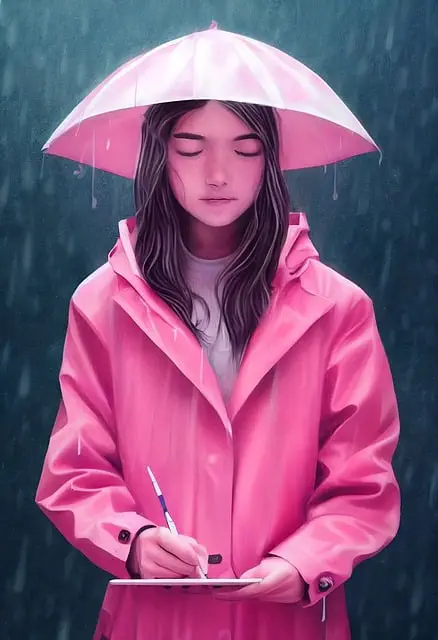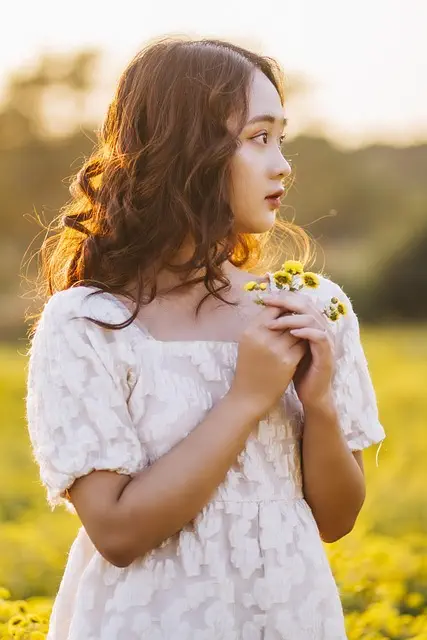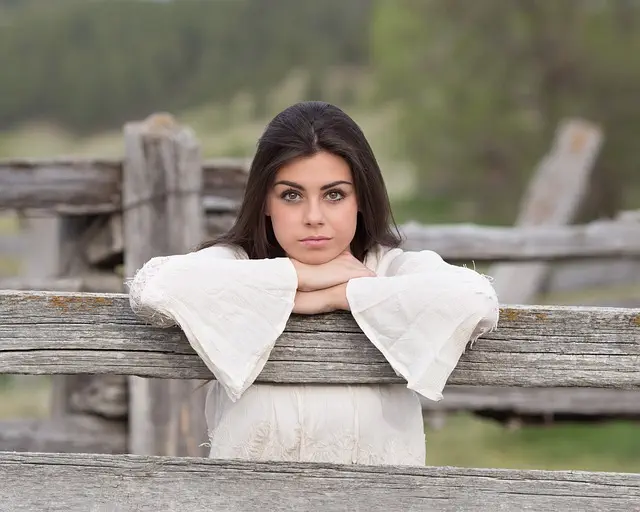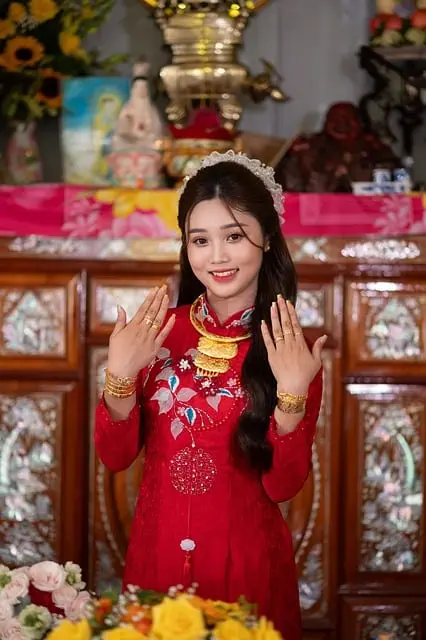The historical progression of girls' costumes provides a vibrant tapestry reflecting societal and cultural shifts from ancient times to the contemporary era. Beginning with simple garments that denoted status in ancient Egypt and Greece, costumes have evolved through centuries, each era imparting distinct social significance. From the fitted silhouettes of the Renaissance to the grandeur of Victorian gowns and the youthful exuberance of 1920s flapper dresses, girls' costumes have consistently mirrored the times. The 20th century saw a global fusion in fashion, with influences from around the world shaping the diverse styles that emerged post-war. The mid-1900s introduced A-line dresses, miniskirts, and bell-bottoms, becoming emblematic of their respective eras. Today's girls' costumes are a celebration of globalized aesthetics, with contemporary designs drawing inspiration from the historical styles that have come before. This evolution underscores how girls' costumes have not only changed in style but also serve as a reflection of the societal norms and values across different regions and time periods.
Embark on a chronological journey through the tapestry of history as we explore “Historical Costumes,” with a special focus on how girls’ costumes have evolved globally. This article delves into the social status and historical significance reflected in these garments, illuminating the materials and craftsmanship that have shaped traditional girls’ attire into an art form. From ancient civilizations to modern eras, witness the transformation of iconic historical girl costumes that have left an indelible mark on fashion across different cultures. Join us as we unravel the stories stitched in time through the lens of girls’ costumes throughout history.
- The Evolution of Girls' Costumes Through History: A Global Perspective
- Historical Significance and Social Status Reflected in Girls' Costumes
- Materials, Craftsmanship, and the Artistry Behind Traditional Girls' Garb
- Iconic Historical Girl Costumes: From Ancient to Modern Times
The Evolution of Girls' Costumes Through History: A Global Perspective
Throughout history, girls’ costumes have undergone profound transformations that reflect social, cultural, and economic changes across different regions. In ancient civilizations like Egypt and Greece, young girls wore simple garments that were functional and often indicative of their status. The Greek chiton and himation for example, were common attire for girls, with variations in style according to the era and geographic location within the Hellenistic world.
As we journey through time to the Middle Ages in Europe, daughters of nobility donned elaborate gowns with wide-sleeved bodices, fitted waists, and full skirts, often adorned with intricate embroidery and trim. The Renaissance period brought about a shift towards more fitted silhouettes, with bodices that laced up the front and skirt layers that could be hoisted up to display petticoats. These changes were not isolated to Europe; similar evolutions occurred globally, from the richly patterned kimonos of Japan to the colorful, layered huipils of Central America. The Victorian era introduced a more constrained silhouette with the introduction of bustles and corsets, which gradually gave way to the relaxed lines of the early 20th century. By the mid-1900s, girls’ costumes began to reflect a globalized aesthetic, with influences from various cultures becoming more apparent. The post-war period saw a diversity of styles, from the A-line dresses of the 1950s to the miniskirts and bell-bottoms of the ’60s, culminating in the eclectic mix of fabrics, colors, and patterns that characterize contemporary girls’ costumes today. Each era’s attire for young women provides a unique window into societal norms and values, highlighting the universal narrative of girls’ costume evolution through history from a global perspective.
Historical Significance and Social Status Reflected in Girls' Costumes
Throughout history, girls’ costumes have been more than mere garments; they have served as a mirror reflecting the historical context and the social status of their wearers. During the Middle Ages, for instance, the elaborate headwear and voluminous gowns indicated wealth and rank, with fabrics like silk and velvet being reserved for the upper echelons of society. The shift to the Renaissance period brought about a transformation in girls’ attire, with garments becoming more fitted and showcasing intricate details that highlighted the wearer’s silhouette and social standing. The use of lace, embroidery, and colorful ribbons became indicators of one’s family’s prosperity and educational level, as only those with leisure could afford such embellishments.
In the 19th century, as the Industrial Revolution progressed, mass production allowed for a wider variety of girls’ costumes to become accessible, yet social distinctions were still evident. The shift from the high-waisted silhouette to the more fitted bodice of the Victorian era often included symbolic embellishments like bows and ruffles, which could be interpreted as a reflection of innocence or maturity. By the early 20th century, with the introduction of synthetic fabrics and the influence of fashion designers, girls’ costumes began to reflect a more modern aesthetic, while still silently communicating the wearer’s societal position. The evolution of these garments over time underscores their enduring role as visual markers of historical significance and social status among young females throughout history.
Materials, Craftsmanship, and the Artistry Behind Traditional Girls' Garb
Historically, traditional girls’ garb has been a reflection of cultural values and aesthetic preferences, often intricately woven with the social fabric of the time. The materials used in these costumes have always been significant, ranging from natural fibers like cotton and silk to more luxurious fabrics such as velvet and brocade, which were reserved for the elite. Each material not only provided a certain level of comfort and warmth but also signified status; rich hues and finely woven textures were indicative of wealth and social standing. The craftsmanship involved in creating these garments was a testament to skillful artistry, with details such as hand-stitching, intricate embroidery, and elaborate embellishments that could take weeks or even months to complete. This dedication to detail and the use of high-quality materials are what endow traditional girls’ garb with an enduring charm and significance beyond mere attire. The artistry behind these costumes is a cultural heritage, often passed down through generations, and serves as a tangible representation of historical periods, regional identities, and societal norms. “Girls costume” is a broad term that encompasses the rich tapestry of attire that has evolved over centuries, each piece a unique narrative of its time and place. The intricate lacework, the vibrant colors, and the flowing silhouettes are all elements that contribute to the cultural storytelling embedded in traditional girls’ garb. These costumes continue to be celebrated not only as garments but as pieces of living history, each stitch and fabric choice a testament to the craftsmanship and artistry of the past.
Iconic Historical Girl Costumes: From Ancient to Modern Times
Throughout history, girls’ costumes have undergone profound transformations, each era reflecting the societal norms and cultural values of its time. In ancient civilizations, young ladies were often adorned in simple yet elegant garments that signified their status and age. For instance, Roman girls wore tunics with a pinafore-like overdress known as a tunica recta, with a broad, flat belt tied around the waist. As civilization progressed to the medieval period, dresses became more elaborate, with layers of fabrics in rich colors and intricate embroidery. The iconic gowns from this era often featured fitted bodices with voluminous skirts, sometimes cinched at the waist with a belt.
The Renaissance brought about a renaissance in fashion for girls as well, with costumes that highlighted the human body’s form and proportions. Gowns became more fitted, showcasing the silhouette with the use of bodices laced up the front and full skirts supported by hoops or farthingales. The Baroque period saw the introduction of more ornamental and ornate dresses, often embellished with lace, ribbons, and ruffles, a trend that continued into the Rococo era where pastel colors and playful motifs were favored. As we move through history, girls’ costumes evolved to reflect changing aesthetics and materials, from the grandeur of Victorian dresses with their high necklines and voluminous skirts to the simpler yet stylish flapper dresses of the 1920s, which emphasized a sleeker silhouette. The 20th century saw a variety of trends influenced by global events and cultural shifts, all of which left an indelible mark on the girls’ costumes that we admire in retrospect. Today, these historical costumes serve as inspiration for modern children’s clothing, with elements from past eras often incorporated into contemporary girls’ attire. Keywords: girls costume history, historical girls costumes.
Girls’ costumes throughout history offer a rich tapestry of cultural, social, and artistic expression. This exploration has revealed the profound impact that historical garments have had on shaping societal norms and reflecting the evolving roles of women across civilizations. From the intricate needlework of bygone eras to the modern interpretations of traditional attire, these costumes serve as a testament to human creativity and ingenuity in material selection and craftsmanship. As we delve into the myriad of girls’ costumes from ancient times to the present day, it becomes clear that each ensemble is more than mere clothing—it’s a narrative of its time, a silent whisper of history speaking to us today. This article underscores the importance of preserving and understanding these historical garments as valuable cultural artifacts, ensuring their stories are not lost to time.





